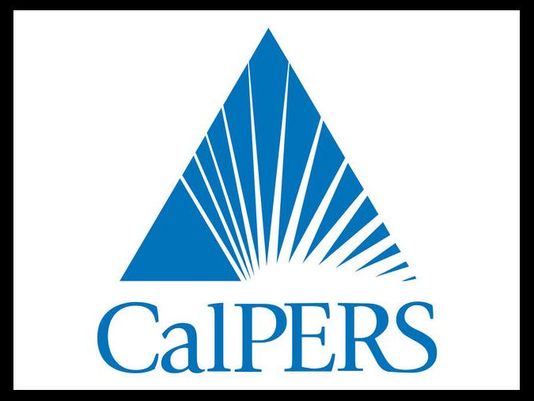
Coronavirus Side Effect: CalPERS Drops to 60% Funded
It is becoming increasingly difficult to distinguish the Coronavirus Crisis from the California Pension Crisis
By Wayne Lusvardi, May 5, 2020 7:08 am
Gov. Gavin Newsom’s coronavirus emergency management policy to shut down the economy rather than triage the vulnerable has resulted in a 10 percent investment fund loss for the California Employees Retirement System – CalPERS – from 70 to 60 percent funded. In absolute dollars this means CalPERS funding dropped from about $377 billion in October, 2019 to about $339 billion today.
A tax increase of about $2,884 per household is needed immediately just to get the Cal-PERS pension fund back to 70-percent funded. That would require an implausible estimated $16,965 (+23.8%) increase in gross income per household for the remainder of this year (May, June, July) to restore the Cal-PERS funding level to 70 percent.
CalPERS Chief Investment Officer, Yu Meng, stated the pension system was better prepared to weather the current downturn in the financial markets due to state shutdowns of the economy and stock price crash by limiting the proportion of volatile stocks in its portfolio. Current asset allocations are 50 percent stocks, 28 percent bonds, 15 percent factor-weighted stocks (aka index funds), 13 percent real estate, 8 percent private stocks and 1 percent cash.
For the first nine months of the current fiscal year (July 2019 through March 2020) the CalPERS rate of return was a negative 4 percent (-4%). That means CalPERS would need to generate about a 16 percent return during the last quarter of the fiscal year (April, May, June 2020) to break even at zero percent return, which is very unlikely. The target average year-over-year rate of return to keep the fund 100 percent funded is 7 to 7.25 percent per year.
To get to 100 percent funded local and state governments would have to increase taxes by about $200 billion per year, from $153 billion today to $353 billion by about 2025; or $15,426 per household per year.
Coronavirus Crisis and Pension Crisis Getting Blurred
Large urban states with the highest coronavirus cases and deaths are all Democrat-run states and those with the lowest are Republican states (see data table below). Democrat-governed states have mandated non-essential business closures while Republican states have, generally, not done so. Democrat-run states have lower pension system funding rates (59.7 percent average) compared to Republican states (78 percent average).
As a result of California’s self-caused drop in CalPERS funding levels, House Speaker and California Congresswoman Nancy Pelosi (D-San Francisco) has called for a federal bailout of states with underfunded pension funds using Coronavirus relief funds.
But Senate leader Mitch McConnell (R-Kentucky) has stated that there will be no “bailouts” of state budgets and pension systems, only virus-related relief.
Governor Phil Murphy (D) already has announced that New Jersey is “weeks away from financial disaster” and “historic public worker layoffs” without a federal government bailout. New Jersey’s pension system is only 36 percent funded.
|
State |
Party of Governor |
Cases |
Deaths |
Percent Cases per Population |
Deaths per Population |
Non-Essential Business Closures |
Pension System Percent Funded Pre-Virus |
Unemployment Rate During Business Shutdown |
|
New York |
D |
313,000 |
18,909 |
1.6% |
0.10% |
All |
95% |
12.3 |
|
New Jersey |
D |
124,000 |
7,742 |
1.4% |
0.10% |
All retail |
36% |
11.7 |
|
Massachusetts |
D |
66,263 |
3,846 |
1.0% |
0.10% |
All |
60% |
9.9 |
|
Illinois |
D |
58,505 |
2,559 |
0.5% |
0.02% |
All |
38% |
9.8 |
|
CALIFORNIA |
D |
52,197 |
2,172 |
0.1% |
0.01% |
All |
69% |
13.9 |
|
Pennsylvania |
D |
48,305 |
2,418 |
0.4% |
0.02% |
All |
55% |
14.8 |
|
Michigan |
D |
43,207 |
4,020 |
0.4% |
0.04% |
All |
65% |
16.9 |
|
Florida |
R |
35,463 |
1,364 |
0.2% |
0.01% |
None |
79% |
7.7 |
|
Texas |
R |
30,522 |
847 |
0.1% |
0.003% |
None |
76% |
8.9 |
|
Georgia |
R |
29,437 |
1,243 |
0.3% |
0.01% |
None |
79% |
18.0 |
|
Data Source |
Realclearpolitics.com April 4, 2020 |
|||||||
According to U.C. Berkeley, one-half of California private sector workers have no pensions. And public pensions are about two-to-three times greater than in the private sector.
And the above does not include the underfunded California State Teacher’s Retirement System (Cal-STRS), which was 65.5 percent funded as of the end of June 2019. The Cal-STRS pension fund lost $69 billion in the coronavirus stock market crash, reflecting a 10.5 percent loss.
- Peter Gleick’s National Water Plan for California - October 12, 2020
- Court Opens Up Big Prop.13 Loophole for ‘Public Franchise Fees’ - October 2, 2020
- New Cal Grid CEO is Ex-Enron Green Power Trader - September 29, 2020





This could account for the 1 Billion transfer to China company B.Y.D. that Newsom made last month and refuses to reveal details. Calpers is in trouble and he shoring up the pension plan ?
Where are the 2 million Cal-PERS retirees? Shouldn’t they be protesting to Newsom to stop the business shutdowns because it is damaging their investment fund? Crickets………
Silly me. I always thought that the Calpers was totally funded by investments.
Here is how Cal-PERS breaks down its funding: But what is missing is that it is 100% funded by taxpayers from the get-go. The money made on return in the money markets is the accrued amount from decades of employee contributions compounded at the rate of return each year.
Based on data over the past 20 years ending June 30, 2019, for every dollar CalPERS pays in pensions:
58 cents comes from investment earnings
29 cents from employer contributions
13 cents from employee contributions
In other words, 71 cents out of every public employee pension dollar is funded by CalPERS’ own investment earnings and member contributions. In the fiscal year ended June 2019, CalPERS paid out nearly $24.2 billion in pension benefits.